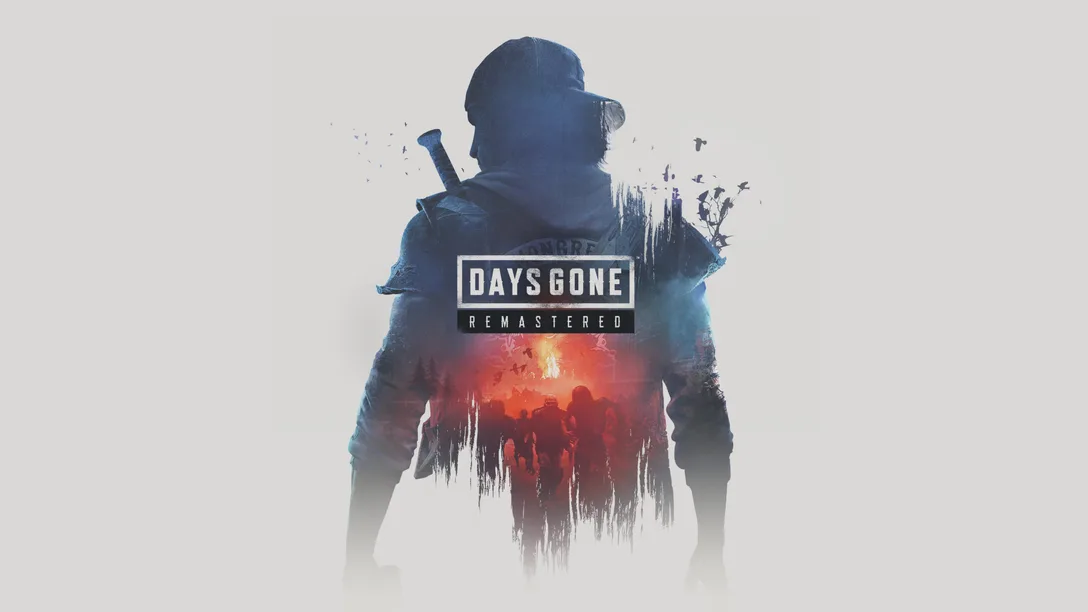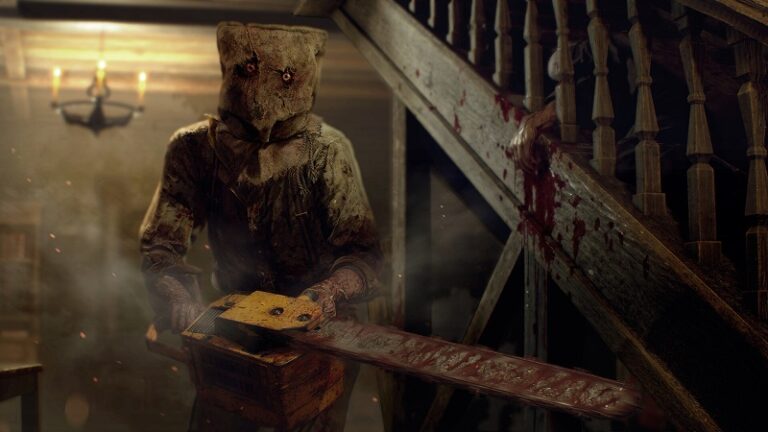
In 2005, Resident Evil 4 hit store shelves as a GameCube exclusive and reinvented the wheel in nearly every way it could. Beyond just shaking up the Resident Evil franchise, the impact Leon’s adventure made on the industry as a whole has continued to define both horror games and shooters for over a decade since its release. With nearly annual re-releases across every thinkable platform (including twice on PC), I’ve come to know this game like the back of my hand — if not better, to be honest. There’s no corner, no nook, no pixel of this game that I haven’t become intimately familiar with over my many, many revisits to this classic horror shooter. I was very confident that I had squeezed every last drop I could out of Resident Evil 4 — until now.
Enter Resident Evil 4 VR, developed exclusively for Oculus Quest 2 by Armature Game Studio and rebuilt from the ground up in Unreal Engine with gameplay completely reworked for VR. Unlike RE’s previous VR outing (Resident Evil 7: Biohazard), RE4 VR offers an entirely new gameplay experience unlike anything else in the series to date, allowing you to step into Leon’s shoes and experience the world of RE4 from not only a first-person perspective but from a fully immersive and virtually interactive one as well.
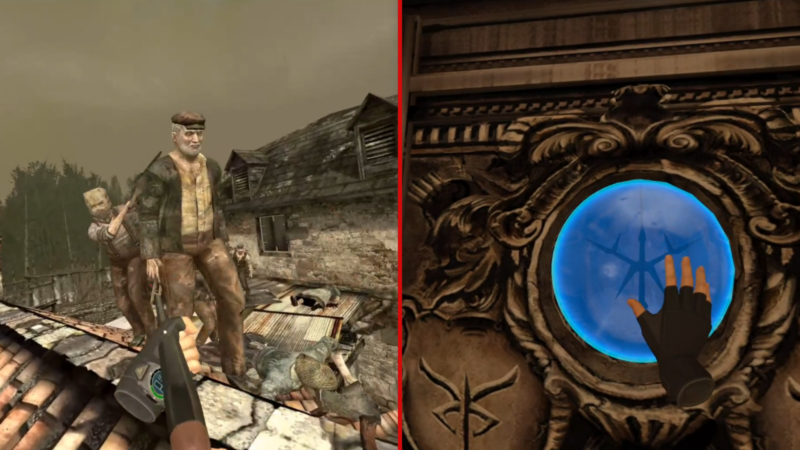
While the core of RE4 VR is still the same as its 2005 origins, the way you interact and fight within that core completely changes and redefines the entire experience. Leon is no longer an avatar for the player to take control of, the player now has the ability to step into the game world and replace him with themselves. This dynamic enables faster, more complex, and more strategic gameplay than ever thought possible in not only the original RE4, but any Resident Evil game, as you quickly maneuver around each combat arena.
Physically unholstering your sidearm and taking aim across a room-full of targets, weaving out of the way of a thrown hatchet, chucking a grenade into a crowd of Ganados with your left hand while slashing away at a fallen enemy with your knife in the right; the possibilities stack up quickly and become defined by what you’re able to come up with on the fly with the tools at your disposal. Leon’s actions in the original were limited by the restraints of animation, timing, and the classic tank-controlled movement. Here, you’re only held back by your skill and ability to think on your feet. Each and every encounter becomes an entirely new adventure as you tackle everything this game throws at you in your own personal way.
Unlike the original game, you’re equipped with something of a utility harness which allows you to keep both a handgun and a two-handed gun (shotgun, sniper rifle, etc), grenades, health items, and your knife, which is all within reach at all times without having to duck in and out of the inventory menu as often. Took a mace to the face? Whip out a first aid spray and heal yourself, while taking aim and popping that Ganado’s face with your free hand. It’s all incredibly intuitive and becomes second nature almost instantly.

Powerful is the only word that comes to mind when describing the exhilarating nature of your impact on each combat encounter. Of course, poor planning or a cocksure attitude can still see you get overwhelmed as the game ramps up its encounters, but you’ll quickly begin to feel like John Wick, bending each shoot-out to your will. Shooting a sickle out of the air is one thing — doing it in VR is something else entirely. Beyond even that, your newfound freedom of movement and perspective has also opened up a completely new way of approaching each encounter. From side-stepping thrown weapons to firing backward over your shoulder and landing a headshot without having looked, this game has some of the most badass feeling action I’ve ever had the pleasure of experiencing.
Each and every weapon also offers its own series of fun mechanics, as they all have to be reloaded manually now, rather than simply pressing a button. Where Leon would originally play out an animation to reload, you’re left to physically slap in a pistol’s magazine, or load bullets into a revolver with a speed-loader, or slide in a shell and pump a shotgun. They all have their own little learning curve, as each weapon has its own small twist on reloading, but it’s hard to deny how much fun it can be just reloading each of them. My favorite has to be the bolt-action rifle, which requires you to both reload with a magazine as well as pull the bolt to chamber each round while firing. It makes you feel like you’re a master sniper, quickly pulling the bolt while still scoped to rapid-fire in a way that simply wasn’t possible in the original. It’s extremely satisfying.
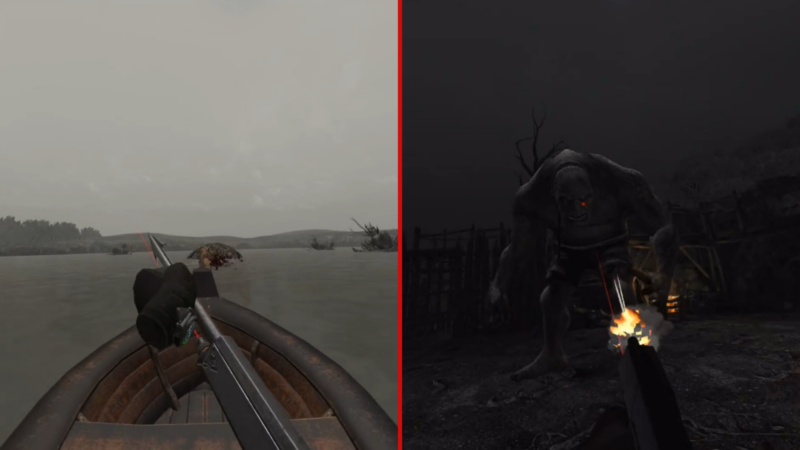
Bosses are something else altogether, adding to the sheer scope of the experience, and reminding you of just what a massive difference there is between playing the original and playing in VR. El Gigante looming over you and Verdugo sprinting at you out of the darkness are experiences that genuinely elevate them back into genuinely frightening. Fighting them with your new VR power becomes an even more fun task as you try to outmaneuver them on their turf, slowly overwhelming them with the sheer force of your fighting prowess.
All of this newfound power has also resulted in Resident Evil 4, a game never designed for VR and in fact being relatively slow in comparison to where the third-person shooter genre would evolve from it, being a bit too easy. I suspect that the ‘Normal’ difficulty here has been adjusted to try and account for things like the ability to walk and shoot (a first for RE4) and dual wield certain weapons, but the core of the game’s enemy AI and weapon balancing does noticeably hiccup in places as it just wasn’t designed for this sort of advanced experience. Admittedly (and without trying to sound pompous), I am very good at RE4, to begin with, so there’s a chance my familiarity is causing the game to become even easier.
Of course, there’s much more to RE4 besides its combat, and the team at Armature have killed themselves to make it just as exciting and fresh as the new shooting mechanics. Every menu, every door, every button, every crank have all been retooled to in some way take advantage of VR interactivity. Nearly every instance of simply pressing a button prompt in the original version has been replaced with a physical action, be it opening a treasure chest or firing a cannon. Each new puzzle requires a completely new interaction, with even the simplest ones (like the ‘crystal ball’ puzzle from Chapter 1-2) being given a completely new life thanks to the way we interact with it (now we physically rotate the ball with our hands). Even our inventory has been reworked, grabbing and rearranging items in the beloved attache case by hand, and plucking treasures out of a new jewelry box menu to examine more closely.
Speaking of ‘examining more closely’, another incredible addition to RE4 VR is the visuals. Easily, bar-none the best-looking official release of Resident Evil 4 to date, RE4 VR completely overhauls nearly every texture it can. Crisp and obsessively detailed environments breathe new life into our favorite locals like never before, and newly remodeled items feel more real and beautiful than I thought possible. Weird little things got me, like the scribbled ‘Collection Tank’ handwriting on a circuit breaker now being clearly legible and crisp, clearly re-done by hand, made my geeky little heart sing. It’s more than just textures though, as new lighting and environmental details have been added to bring a richness and life that simply was not present before.
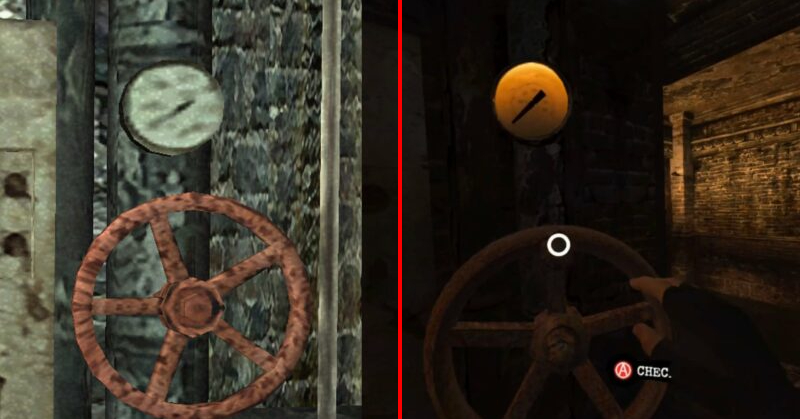
Where there may once have been simply some static grey/brown pipes covered with muddy textures vaguely indicating that there were gauges affixed to the sides, we now have beautiful new models of fully realized gauges glowing with orange light and shuddering under the weight of whatever task they were designed to accomplish. The world is simply more alive, despite being surrounded by gloom and death. It’s breathtaking at times, especially as someone who knows the experience so well.
Along with these changes, it would be remiss of me not to comment on a series of dialogue changes, which have removed multiple “sexual” situations. Whether it be Leon offhandedly commenting on Hunnigan’s age or the removal of Luis’ “ballistics’” comment towards Ashley, the loss is noticeable. While it’s easy to wave these away as an effort to “update” the game for modern audiences (which has been the developer’s official statement), the changes themselves feel both tone-deaf as well as noticeably surface level and performative. Again, Leon’s comment on Hunnigan’s age was removed — but Hunnigan telling Leon to “behave” himself around Ashley just a few lines later is still present. Luis’ comment on her chest has been removed, but Ashley’s goofy ‘jiggle physics’ still remains.
One change I was expecting was the removal of the “upskirt” easter egg, which is a welcome change given how uncomfortable it always has been, might be the best example of these changes’ weird surface-level understanding of context. Ashley’s legs now simply vanish into a black void beneath her skirt, which is fine, but she still reacts and covers herself up if you glance upwards while she’s on a ledge. This disconnect feels incredibly creepy, as it implies that while the developers (although more than likely Oculus owner Meta) weren’t okay with being able to actually see her underwear, they were still fine with making it clear that you’re perving on her anyway. On top of all this the fact that Ashley doesn’t yell at Leon for doing so anymore (she remains dead silent when she covers up, as opposed to shouting “OH! You pervert!” as she did originally), mixed with the fact that she originally angrily defended herself against Luis’ now-deleted creepy comment, results in Ashley being robbed of her agency and no longer allowed to defend herself despite everyone knowing what’s supposed to be happening anyway. Ashley didn’t need Meta defending her, she had it covered herself.
Visuals and dialogue aren’t the only things that have changed, as a handful of geography elements (such as the placement of some balconies and stairs) have also received small tweaks, presumably to better click with the VR gameplay, as well as a few special moments that have been completely overhauled, such as replacing the thrown harpoons during Del Lago’s boss fight with an all-new spear gun. It would trip me up every now and again, but in its own way, it was also exciting getting just a little bit more “new” out of such an old and set in stone experience.
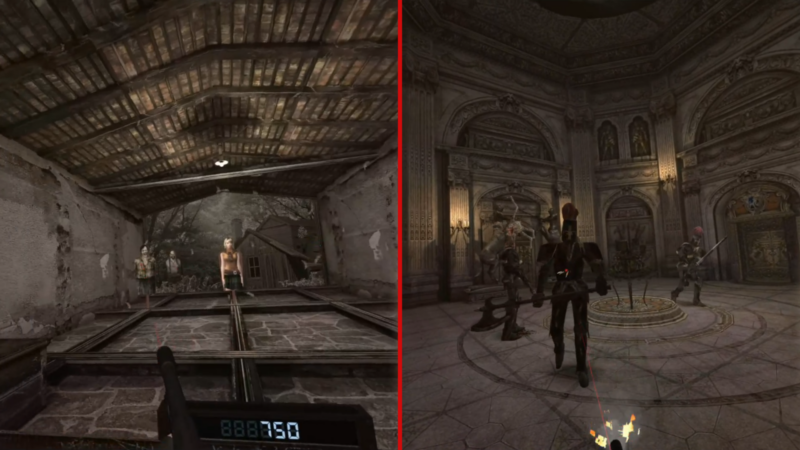
Sadly, all bonus modes (Assignment Ada, The Mercenaries, and Separate Ways) have all been left out of this release, but I’m not too surprised. The wealth of work put into this and the magnitude of content it offers just in being the original RE4 campaign alone is enough to make it one of the best VR games on the market. If you are looking for something with a scoring system, RE4’s shooting gallery minigame is still here, although it’s been reworked slightly. Originally, you’d select a loadout to work with, either a sniper or rapid-fire setup. Now, each level of the gallery is weapon-specific, with a pistol level, a shotgun level, a sniper level, etc. It’s incredibly fun, and I wish there was an endless, score-attack version of it to play.
Overall, if you own an Oculus Quest 2, this is a must-own game. No ifs, ands, or buts about it, Resident Evil 4 is still one of the best games ever made and it’s now one of the best VR games ever made. I desperately hope this game succeeds, and that the team behind it gets the chance to either tackle bringing another Resident Evil classic to VR or perhaps even telling a new REVR story altogether. Every last second of it is packed with fun and just the most incredible amount of effort I’ve ever seen, placing it between remaster and remake in a way I’m not sure I’ve seen before. Even if you’ve played RE4 hundreds of times, trust me — you haven’t played it like this, it is not an experience to miss.
 (9.5 / 10)
(9.5 / 10)
Amazing
 (9.5 / 10)
(9.5 / 10)Rely on Horror Review Score Guide
Review code provided by the publisher

